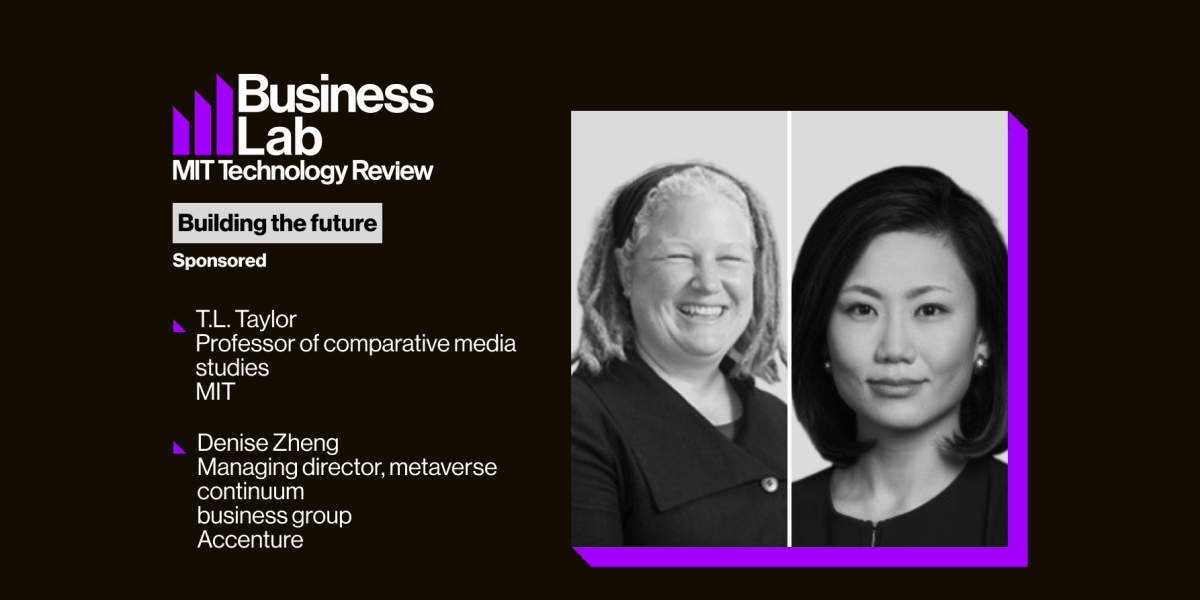
It’s this continuum of technologies that’s evolving that will shape the future, in my opinion. When you asked “what are companies doing there now,” I think you mentioned Walmart. What I’m seeing is that a lot of companies that are interested in exploring the metaverse, they want to anticipate disruption. They want to deeply understand what are the opportunities, what are the risks and what does it mean for their business and how to strategically engage, to learn, to test and learn, but also to reap some enduring value from engaging with the metaverse.
So they’re trying to figure out their role rather than just to sit in the sidelines. For a lot of them, it’s really driven by the fact that young users, about 80% of them are saying they’ve grown up with gaming and they consider themselves gamers. I can’t wait for TL To talk more about this, but it’s about in many ways accessing the next generation of consumers, the next generation of users, and building and strengthening that loyalty with them. And so a lot of brands, a lot of companies, are entering into the metaverse for that reason. But also on the enterprise side, experimenting with the metaverse because they want to see how it can drive efficiencies, how it can drive better collaboration. So, that’s kind of what we see unfolding right now.
Laurel: Well, that’s great. On that line of collaboration TL, we’re discussing the metaverse in the frame of business, but there is an element of community that is traced back very deep into the history of the internet. So where are we now on the historical timeline of virtual environments?
TL: Yeah, it’s really terrific hearing Denise’s reflections. I really caught two points there about the internet of place and the internet of ownership because actually those two themes go back to the earliest days of online networking in what were called MUDs, multi-user dimensions, sort of text-based, multi-user play spaces. Those actually originated in the late 70s, if you can believe it. So we’ve actually had versions of this folks coming together online to play, to create, to communicate, and to build community for decades now. We’re really just seeing the latest iteration of that. So I always love looking back, looking forward because some of the experiments we’re doing now have already been done, and it might be worth thinking about what is the next iteration, what are the next challenges to extend that long history and conversation?
Laurel: So yeah, how do you see the metaverse or as it’s being imagined now as an opportunity for a new way of working and life in the virtual world, and what’s so different about this reincarnation of it versus from years past?
TL: Well, I’m actually very curious to see if folks who are working on it now can distinguish what they’re going to do differently. Because right now I’m seeing a lot of the same things we’ve seen before and there’s some really important lessons there. It’s not enough to, for example build a store in a virtual world and expect people are just going to come to it and buy things. That was done, for example, in Second Life. I mean, Second Life is a really interesting moment in the history of virtual worlds. In some ways it was the second wave, it was a 3D world. We had internet infrastructure, we had people with good enough computers to be in that space. And if you even look back at what happened is a lot of hollow empty spaces were built. So, I think there’s a real challenge on folks who are tackling this now to pay attention to some big ticket issues that still have to be wrestled with.
Some of those are technical and infrastructural. People want meaningful engagement in online spaces, and that means we need to attend to embodiment in virtual spaces. How do we actually do the kind of sophisticated communication, including non-verbal communication, that we do so well offline in these online spaces? I think the other thing that’s really critical for folks looking forward is understanding that technology is not the pure driver of innovation. Social innovation is something communities and users are constantly doing. And so watching what communities are doing and the context in which they’re working and living and playing is really important. So, I think those are just two things that come to mind in terms of thinking about the future and what could be different if folks really tackle the next round of challenges.
Laurel: Well, it’s excellent perspective. And Denise, when we think about that kind of tech innovation and social innovation, what opportunities are possible now. Americans and people in general spend enormous amounts of time online, but maybe it’s sort of a read-only experience, you’re not necessarily writing to or creating something in response.
